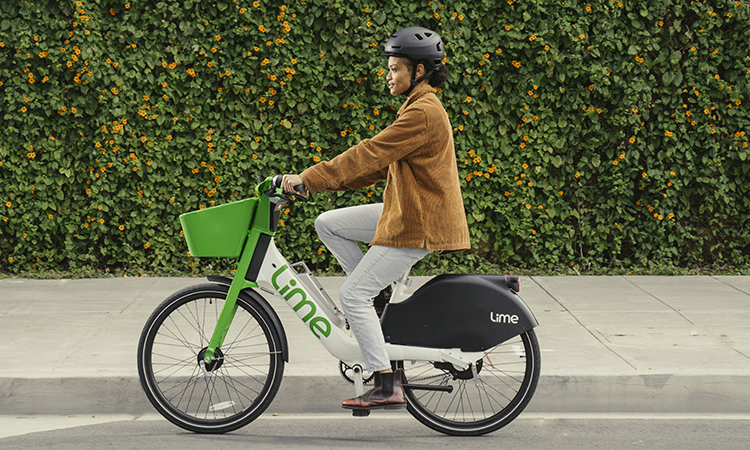Tackling London’s sexist roads: Why it’s time for a safe cycle network
- Like
- Digg
- Del
- Tumblr
- VKontakte
- Buffer
- Love This
- Odnoklassniki
- Meneame
- Blogger
- Amazon
- Yahoo Mail
- Gmail
- AOL
- Newsvine
- HackerNews
- Evernote
- MySpace
- Mail.ru
- Viadeo
- Line
- Comments
- Yummly
- SMS
- Viber
- Telegram
- Subscribe
- Skype
- Facebook Messenger
- Kakao
- LiveJournal
- Yammer
- Edgar
- Fintel
- Mix
- Instapaper
- Copy Link
Posted: 8 March 2023 | Eilidh Murray - London Cycling Campaign, Georgia Corr - Lime | No comments yet
On International Women’s Day 2023, Georgia Corr, Public Policy Manager – UK & Ireland at Lime, and Eilidh Murray, Chair of Trustees at London Cycling Campaign, consider the reasons why only a third of cycling trips in London are made by women, despite the number of people cycling in the City of London having increased, and outline what can be implemented throughout the city in order to make the roads safer and more equitable for female cyclists.


Credit: Lime
Cycling in the capital is booming. The number of people cycling in the City of London at peak times now outnumbers the number of motor vehicles. Yet, despite people on two (and three and four) wheels making up the single largest vehicular mode on the City of London’s streets, only a third of London’s cycling trips are made by women – a figure that’s far too small when considering that our population is over half (51%) females.
When we look at other cities like Copenhagen and Amsterdam, we see that the number of females cycling for daily trips eclipses the number of men. So, why, in a city with an increasingly warm reception to two-wheeled vehicles, are we struggling to get women cycling?
For decades, we’ve been planning London’s roads around the commute, and certainly not with women (cycling) in mind. This isn’t something that can be undone overnight, and there are many barriers preventing women from adopting cycling as a primary mode of transport that are still in place. The solutions, however, are straightforward. The first step is to analyse cycling through the female lens, focusing on why women don’t cycle as much and the type of journeys that they would cycle if enabled to.
Analysing journey patterns
In London, there is more that we can do to ensure that women take up cycling, and implementing protected cycle lanes is one of them. London’s increasing list of protected cycle routes on main roads are very welcome, but there is a need to ensure that other routes that women may look to use are addressed particularly as, according to the National Travel Survey, commuting is the sole purpose in just one quarter of all cycling journeys.
Women in their thirties do four times the distance of ‘escorting education’ trips (taking children to school), and half the distance of commuting trips compared to men of the same age, so there’s an evident need for safe cycle routes for such journeys, too. So, we need a cycle network that doesn’t just take into consideration safe routes for commuting – but also to places women go to more often than men.
Local cycle networks will still include main road cycle tracks, but also cover routes to schools, local amenities and neighbourhoods. And planning safe routes for these journeys must be prioritised across London. Where we’re seeing rapid uptake of such an approach – in London and in other cities – we see more women taking up cycling.


Credit: Lime
Safe and sustainable
It’s not just where cycle routes go that needs to be considered. Studies have shown that the quality of route needed to get women cycling is higher than for men. The ‘Near Miss Project’ study showed that routes where those cycling are expected to mix with higher volumes of motor traffic (i.e. most ‘main roads’) are particularly off-putting for women.
Provision of safe routes, then, is particularly important. But such routes to be clear aren’t just about main road cycle tracks. Low Traffic Neighbourhoods (LTNs) can also be hugely beneficial for (equitable) cycling in the city. Repeated academic studies on LTNs have shown that they get more people cycling and ditching their cars, but that they also boost community connections and cut crime. Creating optimum conditions for more people to cycle on main roads and through LTNs also turns out to unlock cycling for many other demographics, including the elderly, children and disabled people.
Rolling out safe cycle routes doesn’t just help a far wider range of people to feel more confident and comfortable cycling, but the resulting increased uptake in cycling then means that more people have an attractive, viable and sustainable alternative to using their cars. Safe cycle routes help to create an equitable landscape of male and female cyclists, and also help our city to cut climate emissions and pollution.
Cycling for the future
It’s not a quick fix, but creating protected, safe-feeling routes suits women, and when you create the conditions for them to cycle, this will transform cycling in London into a form of everyday, healthy mass transport, following the lead of European cycling-friendly cities that see so many cycle as a way of life beyond the commute.
On 5 March 2023, London Cycling Campaign held the successful ‘LCC Women’s Freedom Ride’, highlighting the gender gap in cycling in London and the lack of provision for women to cycle. The event saw hundreds of female riders cycle around Central London as both a celebration and a call to action for more investment in infrastructure.




Related topics
Accessibility, Active travel, Infrastructure & Urban Planning, Micro-mobility, Modal shift, Passenger Experience, Vehicle & Passenger Safety
Related modes
Bikes & Scooters
Related cities
London
Related countries
United Kingdom
Related organisations
Lime, London Cycling Campaign
Related people
Eilidh Murray, Georgia Corr








